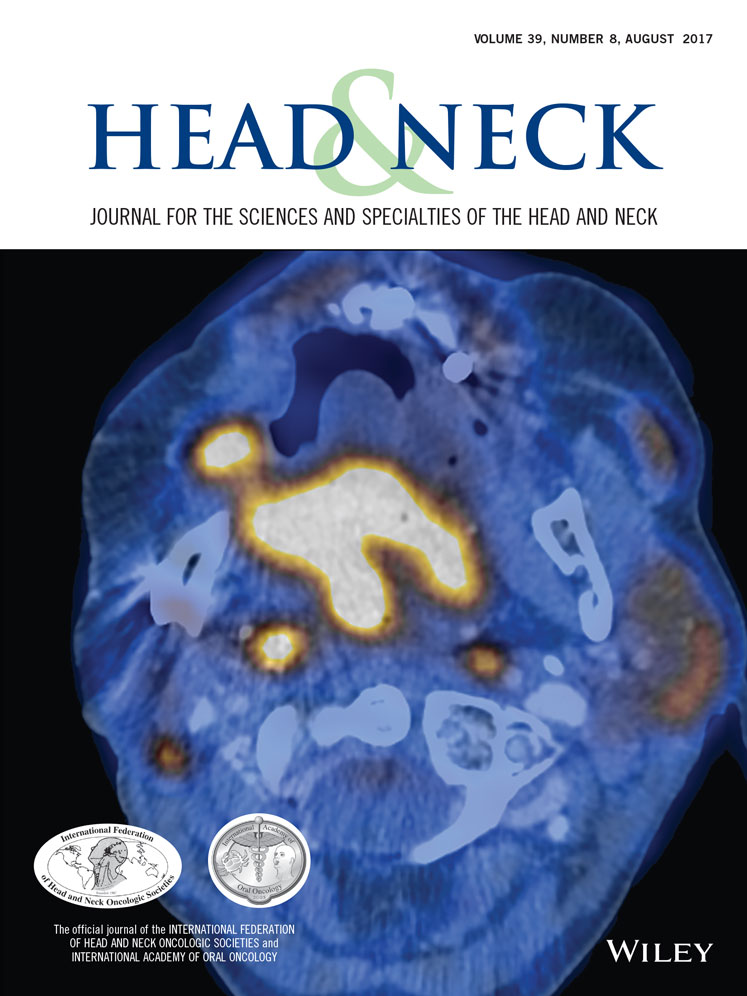Delayed lower cranial neuropathy after oropharyngeal intensity-modulated radiotherapy: A cohort analysis and literature review
Funding information: This work was completed with support of the MD Anderson Oropharynx Program Patient-Reported Outcomes/Function Core funded in part through the Stiefel Oropharyngeal Research Fund. Dr Hutcheson receives grant support from the MD Anderson Institutional Research Grant Program and the National Cancer Institute (R03 CA188162). Drs Lai, Fuller, and Hutcheson receive funding support from the National Institute for Dental and Craniofacial Research (R01 DE025248 and 1R56DE025248-01). Dr Fuller received/receives grant and/or salary support from the National Institutes of Health/National Cancer Institute's Paul Calabresi Clinical Oncology Award Program (K12 CA088084-06) and the Clinician Scientist Loan Repayment Program (L30 CA136381-02); the SWOG/Hope Foundation Dr Charles A. Coltman Jr, Fellowship in Clinical Trials; a General Electric Healthcare/MD Anderson Center for Advanced Biomedical Imaging In-Kind Award; an Elekta AB/MD Anderson Department of Radiation Oncology Seed Grant; the Center for Radiation Oncology Research at MD Anderson Cancer Center; and the MD Anderson Institutional Research Grant Program. This work was supported in part by the infrastructure support of the National Institutes of Health Cancer Center Support (Core) Grant CA016672 to The University of Texas MD Anderson Cancer Center.
Ehab Y. Hanna, MD, Editor, was recused from consideration of this manuscript.
Abstract
Background
The purpose of this study was to examine swallowing-related lower cranial nerve palsy (LCNP) in oropharyngeal cancer (OPC) survivors after intensity-modulated radiotherapy (IMRT).
Methods
Patients treated with definitive IMRT (66-72 Gy) were pooled from institutional trial databases. Prospective analyses on parent trials included videofluoroscopy, clinical LCNP examination, and questionnaires pre-IMRT, 6 months post-IMRT, 12 months post-IMRT, and 24 months post-IMRT. Time-to-event and incidence of LCNP was estimated with competing risk methods. Literature review (1977-2015) summarized published LCNP outcomes.
Results
Three of 59 oropharyngeal cancer survivors with a minimum 2-year follow-up developed hypoglossal palsy ipsilateral to the index tumor (median latency 6.7 years; range 4.6-7.6 years). At a median of 5.7 years, cumulative incidence of LCNP was 5%. LCNP preceded progressive dysphagia in all cases. Published studies found median incidence of radiation-associated LCNP was 10.5% after NPC, but no OPC cancer-specific estimate.
Conclusion
Although uncommon, the potential for late LCNP preceding swallowing deterioration highlights the importance of long-term functional surveillance in OPC survivorship.




